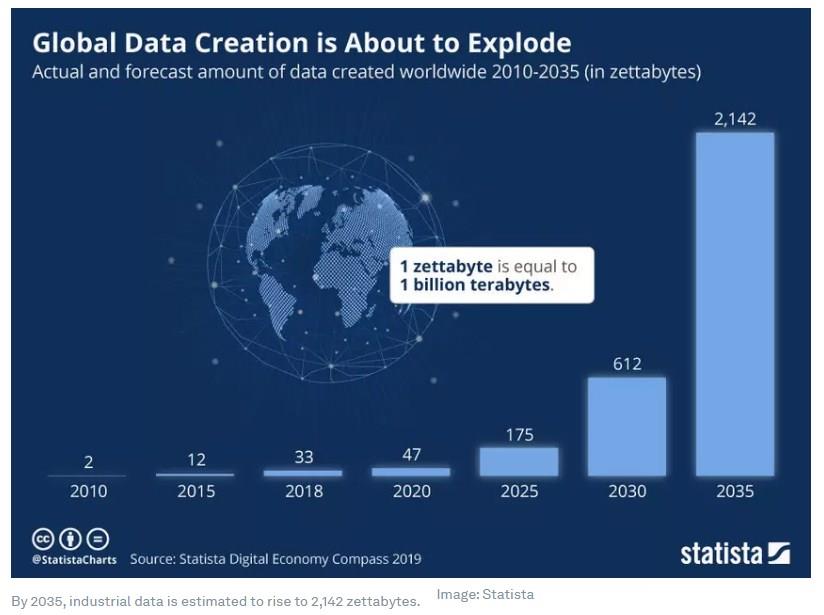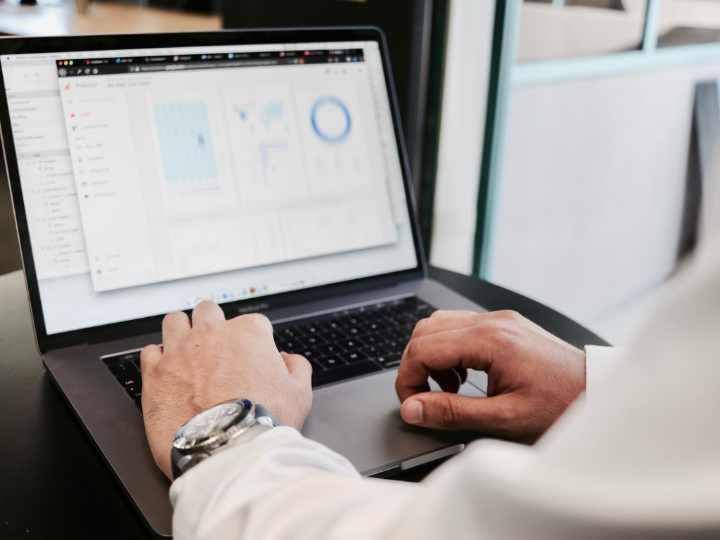by Peter Herweck and Lisa Johnston*
Industrial data is doubling roughly every two years. In 2021, industries created, captured, copied and consumed 74 zettabytes of data – by 2023 that is estimated to rise to 130 zettabytes. This rapid growth is creating a problem, because huge volumes of data on their own are not useful.
Data needs to be organized, structured and analyzed to unlock insights that drive value for companies. The average data scientist spends up to 60% of his or her time gathering, cleaning and collating data, rather than driving insights.
With so much time devoted to data-gathering, it’s no surprise that companies that can master their data effectively will give themselves a competitive advantage in terms of productivity, innovation and sustainability. We estimate that companies that use data effectively see their productivity double as a result.
With productivity and growth at stake, it’s clear that digital solutions which can gather, organize, manage and analyze data are rapidly becoming the backbone of the global economy. Data needs to be collected and contextualized in ways that can be easily consumed by decision makers – and to do this, you need analytics and artificial intelligence (AI) purpose-built for specific industrial applications that can make sense of data and stitch it into a coherent digital thread that spans the entirety of your business operations. Using this insight, you can discover patterns and anomalies, and leverage AI to shift entire business models from reactive to proactive decision-making, boosting efficiency and driving sustainability.
Organizations such as Veolia, SCG Chemicals and Commonwealth Fusion Systems are adopting hybrid architectures – spanning systems from edge computing and the industrial internet of things (IIoT) to the cloud – that drive mobility, scalability and cost-efficiency. This greater global connectivity enables these companies to handle enormous amounts of data quickly and easily.
The smooth, seamless linkage between low-cost sensors, IIoT devices and more traditional industrial systems using software-as-a-service (SaaS) and hybrid-cloud architectures will drive the rapid extension of human-machine dialogue and connected objects. This is the sustainable future of industries – and it also heralds the beginning of the fifth industrial age, incorporating greater human intelligence and accelerated by the pandemic.

Visualizing the industries of the future using data
For industrial businesses to meet their growth and sustainability goals, the universal first step is to build their industrial information infrastructure in order to collect data, establish baselines and track progress over time. This measurement and monitoring process sounds simple enough – but given the complexity of modern industry operations, it is often a challenging, time-intensive activity with a high propensity for creating conflicting data sets across sites and quickly outdated information.
Having a unified industrial information platform has never been more essential for companies that are serious about understanding and improving their performance and driving decarbonization. Indeed, some companies are using digital tools to drive deeper innovations.
Global automobile manufacturer Toyota has created a unified energy monitoring and management system that spans eight plants to cut aggregation and validation time for energy consumption from hours to seconds. It also provided Toyota’s leaders with intuitive trend analysis and smart reporting, making it easy to optimize for carbon efficiency and to quickly identify any operational abnormalities that could result in negative carbon impacts without quick corrective action. Now the Toyota team can both see and measure progress on the company’s commitment to reach net-zero at their global plants 2050, in real time.
Unlocking the promise of renewables – using integrated information
Driven by stronger support from government policies and more ambitious clean energy goals announced before and during COP26 , the International Energy Agency now expects renewables will account for almost 95% of the increase in global power capacity through 2026, with solar PV alone providing more than half. Here too, sector-specific data-centric operating models have a huge role to play in accelerating and scaling renewable power.
A good example is US power company Dominion Energy. They took a data-centric approach to ensure the smooth operation of their network, installing an industrial information management system to unify data on power grid performance so that they could optimize energy supply to customers. The company achieved three objectives: first, they provided accurate, trusted data on energy sources and power flows to their own engineers to optimize the grid; secondly they unified a high volume of data into a single interface. The third objective took the team by surprise – they discovered that in addition to the power-optimization benefits, the company’s performance data itself had value to their customers, who could then validate their net-zero commitments in real time, providing a data-trail that showed they were sourcing and using renewable energy. This benefit has enabled Dominion to unlock a new source of revenue and is paving the way for further decarbonization of the power network.
A new mindset for a new opportunity
Success in our new world is about adopting a newly digital mindset. As companies switch their focus towards data-centric operations, simplifying processes, minimizing wasted work to build value and drive sustainability, so agility and resiliency grow.
This is the promise of digital transformation and as the examples show, many companies are already adopting this innovative approach.
*Chief Executive Officer, AVEVA Group and Chief Marketing Officer and Chief Sustainability Officer, AVEVA Group
**first published in: www.weforum.org




 By: N. Peter Kramer
By: N. Peter Kramer

